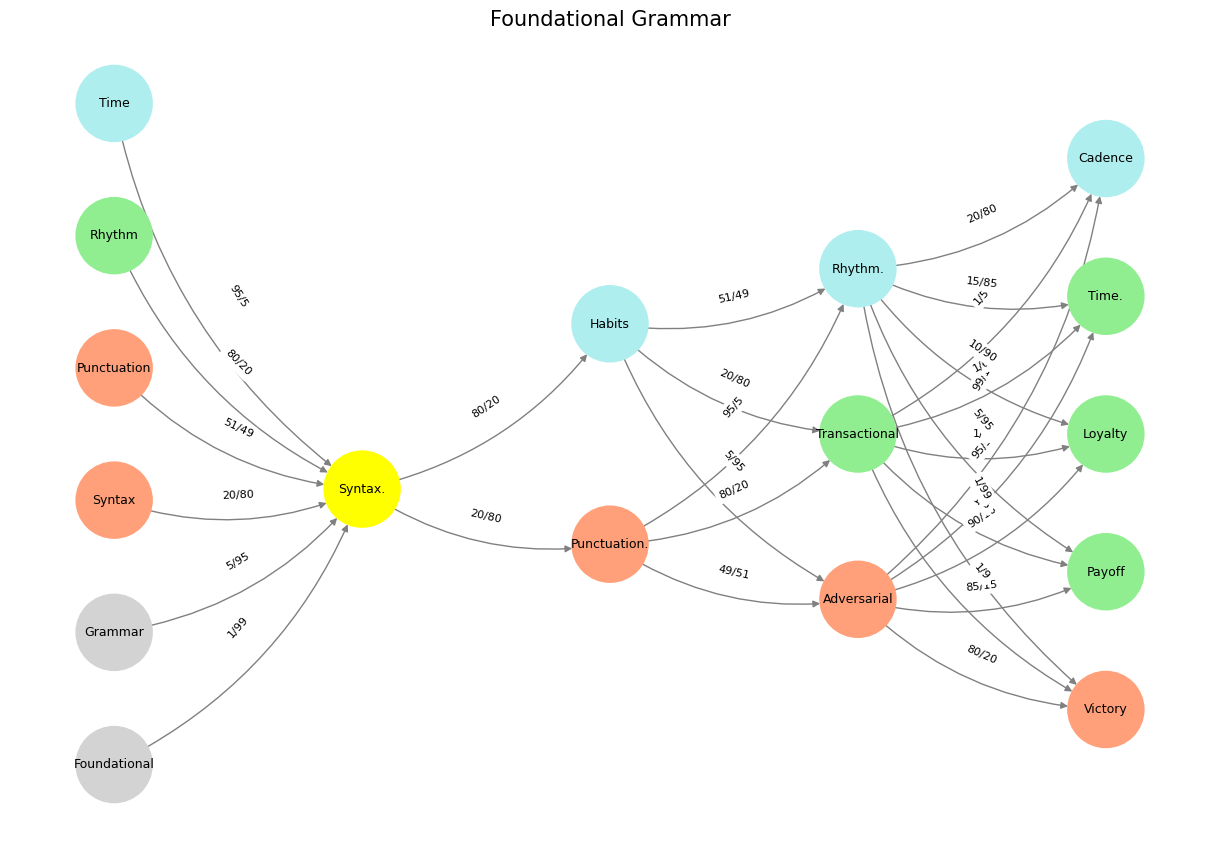Life ⚓️#
A pop song that resists the dull certainty of a simple chord progression must embrace a sense of movement, unpredictability, and harmonic depth without alienating the listener. At its core, pop music thrives on accessibility, but the best compositions weave in subtle complexities—whether through melodic riffs, syncopation, or reharmonization—that enrich the experience without overwhelming the ear. To achieve this balance, a songwriter must play with expectations, introducing harmonic shifts, rhythmic play, and dynamic variation while maintaining the emotional immediacy that makes pop music so compelling.
A strong foundation is often necessary, but it should be approached as a launching pad rather than a constraint. Many pop songs rely on predictable four-chord loops, such as the I–V–vi–IV progression, but a more intriguing approach involves subverting these conventions. One way to accomplish this is through modal interchange—borrowing chords from parallel modes to introduce unexpected color. A song in C major might momentarily dip into C minor’s iv chord (Fm) or use a bVII (Bb major) instead of a standard dominant. Similarly, secondary dominants heighten harmonic tension by briefly pulling the listener toward a new tonal center, even if the resolution ultimately reaffirms the original key. A pre-chorus might hint at a modulation that never arrives, merely teasing harmonic instability before resolving satisfyingly in the chorus.

Fig. 4 Veni-Vidi, Veni-Vidi-Vici. Yep, Red Queen Hypothesis all the way.#
Rhythmic complexity can further elevate a pop composition, particularly through syncopation and metric shifts. A melody that plays with offbeats, anticipates resolutions, or delays expected accents can create a sense of forward momentum. Groove-oriented genres such as funk, R&B, and neo-soul have long exploited these techniques, crafting rhythms that feel elastic and dynamic rather than rigidly metered. One effective technique is polyrhythm—layering a melody that implies a different time signature over a steady 4/4 beat. A pre-chorus in triplets against a straight drum groove can heighten contrast, making the eventual chorus drop feel all the more powerful. Additionally, metric modulation, where the perceived tempo subtly shifts within the same pulse, can introduce an unexpected weightlessness before locking back into place.
Melody plays an equally crucial role in subverting predictability. A simple stepwise melody can be transformed by introducing small motivic riffs that evolve throughout the song. This might take the form of a recurring vocal phrase that is subtly altered each time it appears, reflecting changes in harmony or emotional intensity. Likewise, a well-placed blue note—a flattened third, fifth, or seventh—can add a soulful tension, momentarily destabilizing the tonality before resolving smoothly. These techniques are particularly effective when paired with counter-melodies, allowing background instrumental lines to weave in and out of the main vocal, creating a sense of layered conversation rather than monolithic repetition.
Reharmonization offers another powerful tool for keeping a song fresh. The same melody can take on entirely new emotional shades when placed over an unexpected chord. In a second verse, for example, a songwriter might substitute a standard diatonic progression with chromatic planing—moving a chord shape up or down in parallel motion—or introduce tritone substitutions to create a moment of dissonant surprise before resolving naturally. A song that begins with a conventional progression like Am–F–C–G might evolve in its second iteration into Am9–Bbmaj7–Cmaj9–G13, shifting the emotional weight without breaking the underlying structure.
Production choices can further accentuate these harmonic and rhythmic elements. A well-placed moment of silence, an ambient reverb swell that momentarily blurs the harmonic center, or a sudden instrumental break can amplify the impact of the underlying composition. Many great pop productions introduce microtonal inflections—small pitch bends in vocal delivery or instrumental phrasing—that add a sense of organic expressiveness. These are particularly effective in bridging the gap between structured harmonic complexity and raw, emotional immediacy.
The key to elevating a pop song beyond predictability is not to abandon structure but to disguise its inevitability. The best compositions play with expectation, leading the listener through harmonic detours, rhythmic surprises, and dynamic shifts while maintaining a sense of forward motion. This balance between familiarity and innovation is what makes artists like Stevie Wonder, James Blake, D’Angelo, and Jacob Collier so compelling. They do not discard pop’s core principles but rather stretch them, finding ways to complicate and enrich the emotional landscape without sacrificing immediacy.
Ultimately, the challenge in composing a pop song that resists monotony lies in knowing when to introduce complexity and when to let simplicity shine. The most effective harmonic twists, rhythmic shifts, and melodic flourishes are those that enhance the emotional arc rather than simply serve as intellectual exercises. If every unexpected chord or rhythmic variation contributes to the song’s narrative, the result will not feel contrived or self-indulgent but rather like a natural unfolding of something both immediate and profound.
Show code cell source
import numpy as np
import matplotlib.pyplot as plt
import networkx as nx
# Define the neural network layers
def define_layers():
return {
'Suis': ['Foundational', 'Grammar', 'Syntax', 'Punctuation', "Rhythm", 'Time'], # Static
'Voir': ['Syntax.'],
'Choisis': ['Punctuation.', 'Habits'],
'Deviens': ['Adversarial', 'Transactional', 'Rhythm.'],
"M'èléve": ['Victory', 'Payoff', 'Loyalty', 'Time.', 'Cadence']
}
# Assign colors to nodes
def assign_colors():
color_map = {
'yellow': ['Syntax.'],
'paleturquoise': ['Time', 'Habits', 'Rhythm.', 'Cadence'],
'lightgreen': ["Rhythm", 'Transactional', 'Payoff', 'Time.', 'Loyalty'],
'lightsalmon': ['Syntax', 'Punctuation', 'Punctuation.', 'Adversarial', 'Victory'],
}
return {node: color for color, nodes in color_map.items() for node in nodes}
# Define edge weights (hardcoded for editing)
def define_edges():
return {
('Foundational', 'Syntax.'): '1/99',
('Grammar', 'Syntax.'): '5/95',
('Syntax', 'Syntax.'): '20/80',
('Punctuation', 'Syntax.'): '51/49',
("Rhythm", 'Syntax.'): '80/20',
('Time', 'Syntax.'): '95/5',
('Syntax.', 'Punctuation.'): '20/80',
('Syntax.', 'Habits'): '80/20',
('Punctuation.', 'Adversarial'): '49/51',
('Punctuation.', 'Transactional'): '80/20',
('Punctuation.', 'Rhythm.'): '95/5',
('Habits', 'Adversarial'): '5/95',
('Habits', 'Transactional'): '20/80',
('Habits', 'Rhythm.'): '51/49',
('Adversarial', 'Victory'): '80/20',
('Adversarial', 'Payoff'): '85/15',
('Adversarial', 'Loyalty'): '90/10',
('Adversarial', 'Time.'): '95/5',
('Adversarial', 'Cadence'): '99/1',
('Transactional', 'Victory'): '1/9',
('Transactional', 'Payoff'): '1/8',
('Transactional', 'Loyalty'): '1/7',
('Transactional', 'Time.'): '1/6',
('Transactional', 'Cadence'): '1/5',
('Rhythm.', 'Victory'): '1/99',
('Rhythm.', 'Payoff'): '5/95',
('Rhythm.', 'Loyalty'): '10/90',
('Rhythm.', 'Time.'): '15/85',
('Rhythm.', 'Cadence'): '20/80'
}
# Calculate positions for nodes
def calculate_positions(layer, x_offset):
y_positions = np.linspace(-len(layer) / 2, len(layer) / 2, len(layer))
return [(x_offset, y) for y in y_positions]
# Create and visualize the neural network graph
def visualize_nn():
layers = define_layers()
colors = assign_colors()
edges = define_edges()
G = nx.DiGraph()
pos = {}
node_colors = []
# Add nodes and assign positions
for i, (layer_name, nodes) in enumerate(layers.items()):
positions = calculate_positions(nodes, x_offset=i * 2)
for node, position in zip(nodes, positions):
G.add_node(node, layer=layer_name)
pos[node] = position
node_colors.append(colors.get(node, 'lightgray'))
# Add edges with weights
for (source, target), weight in edges.items():
if source in G.nodes and target in G.nodes:
G.add_edge(source, target, weight=weight)
# Draw the graph
plt.figure(figsize=(12, 8))
edges_labels = {(u, v): d["weight"] for u, v, d in G.edges(data=True)}
nx.draw(
G, pos, with_labels=True, node_color=node_colors, edge_color='gray',
node_size=3000, font_size=9, connectionstyle="arc3,rad=0.2"
)
nx.draw_networkx_edge_labels(G, pos, edge_labels=edges_labels, font_size=8)
plt.title("Foundational Grammar", fontsize=15)
plt.show()
# Run the visualization
visualize_nn()


Fig. 5 Veni-Vidi, Veni-Vidi-Vici. If you’re protesting then you’re not running fast enough. Thus spake the Red Queens#

